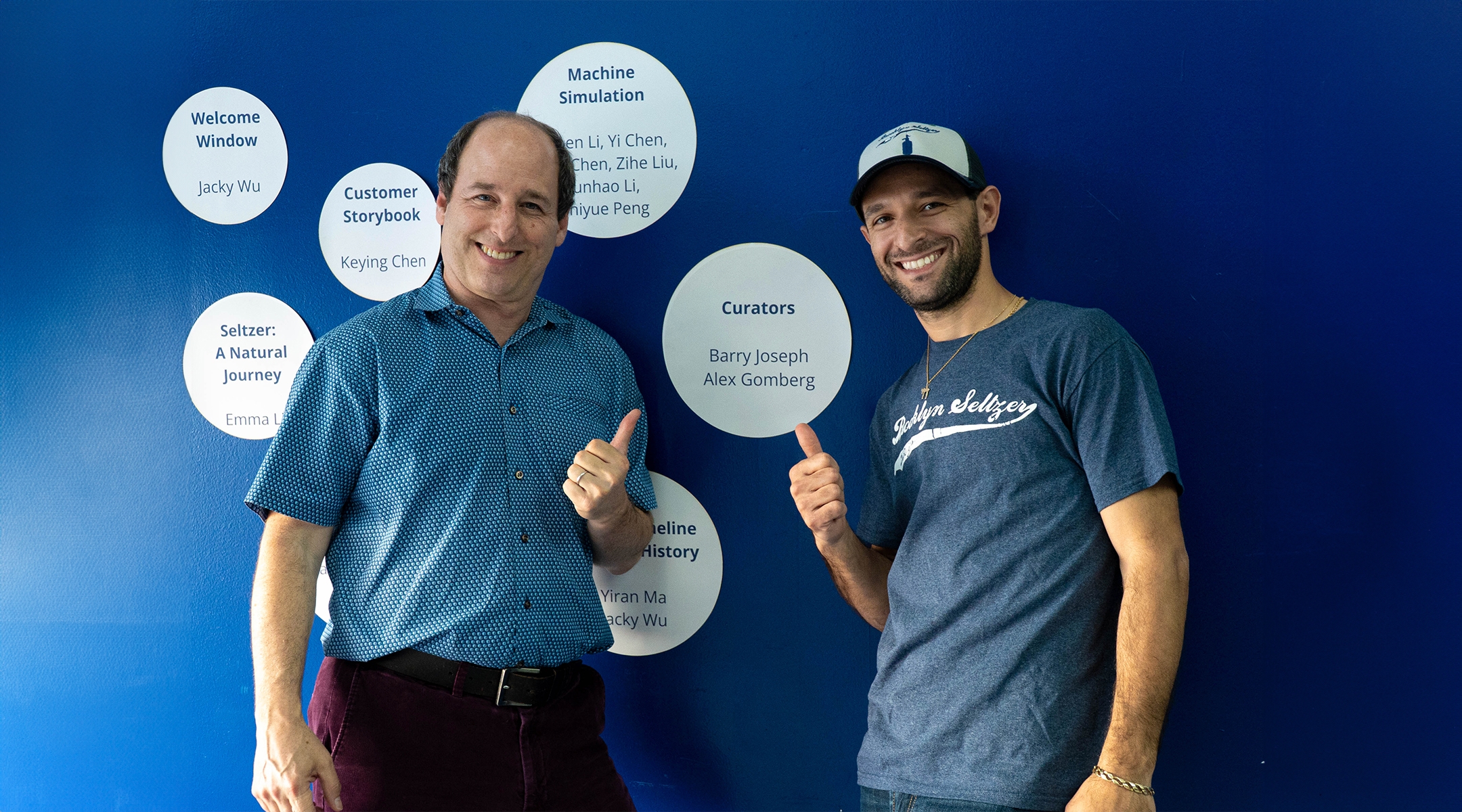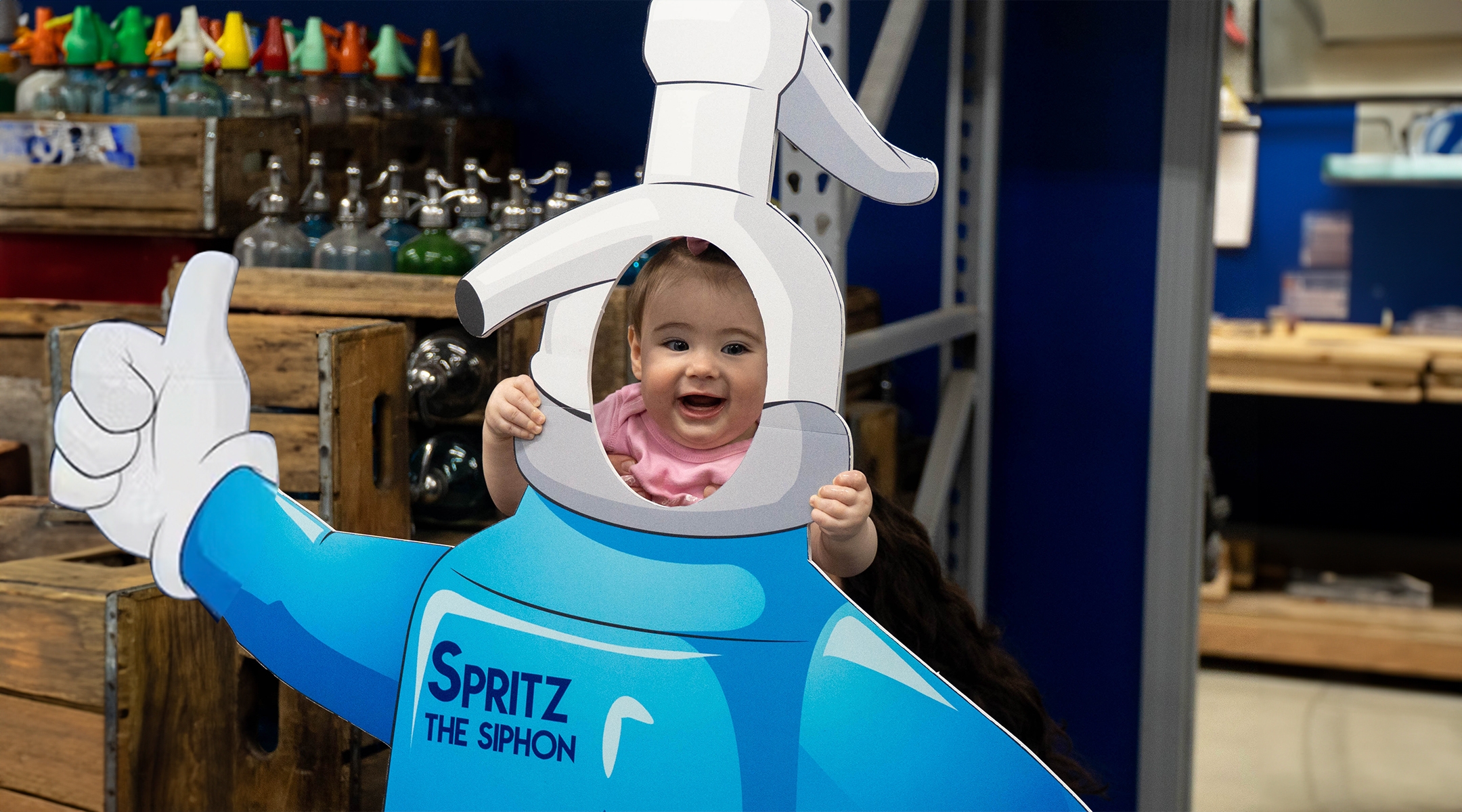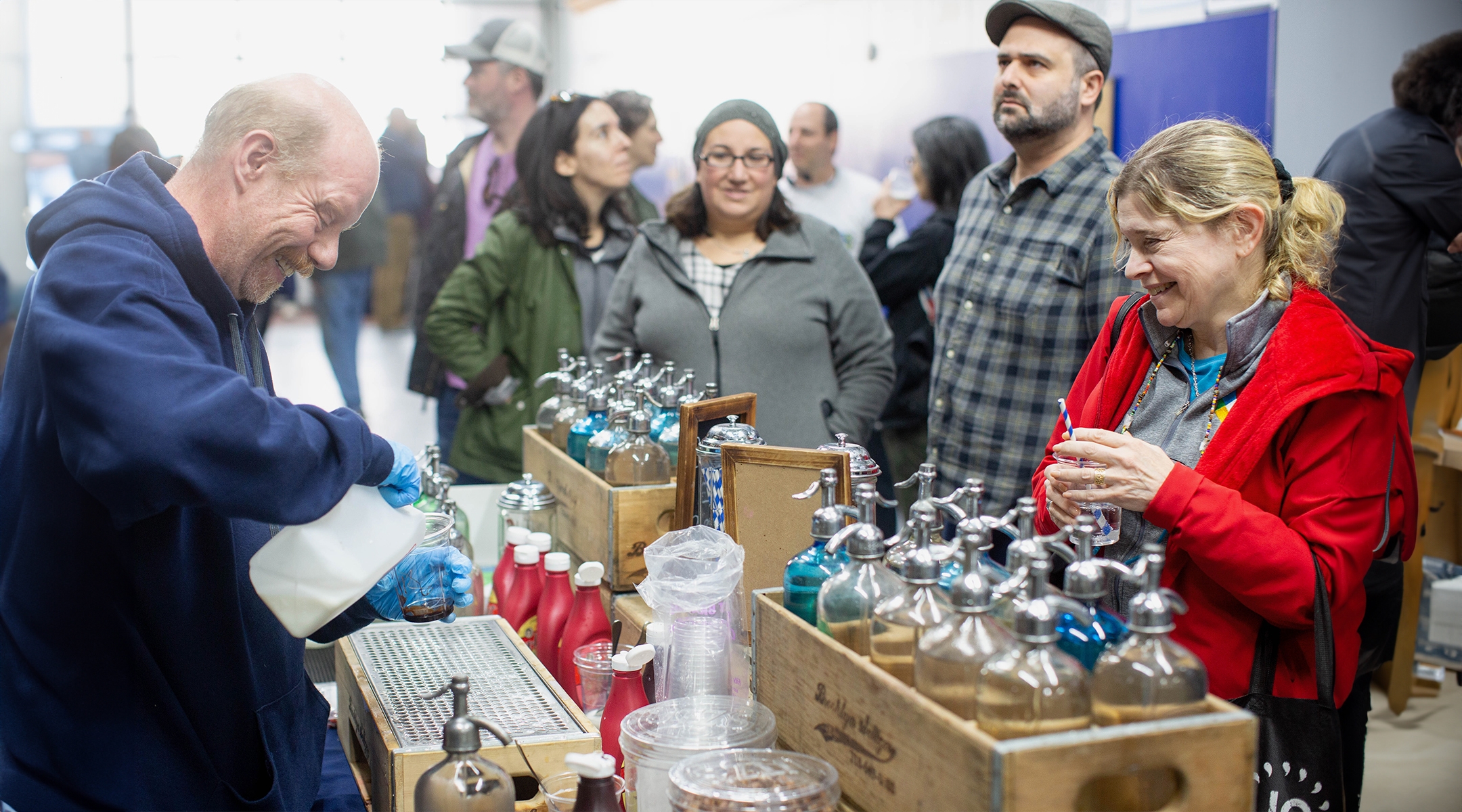(New York Jewish Week) — On a recent Sunday in Brooklyn, some 100 people, mostly families, gathered for a Hanukkah party that offered something a bit different than the typical latkes and games of dreidel. Instead, there was a factory tour, instructions on how to manufacture a classic seltzer bottle and freshly-made egg creams.
That’s because this particular holiday party took place at Brooklyn Seltzer Boys, the last remaining seltzer factory in New York City. The bustling seltzer works, which makes the so-called “Jewish champagne” the old-fashioned way, is located in the Cypress Hills neighborhood on the border with Queens and is also home to the Brooklyn Seltzer Museum.
“This is New York history, Brooklyn history, Jewish history,” fourth-generation “seltzer boy” Alex Gomberg, 36, told the New York Jewish Week.
The museum tells the 2,500-year-old history of seltzer, from the first mentions of carbonated water in Ancient Greece through the mass production and sale of seltzer in the modern day. The museum also focuses on seltzer’s significance in New York City and its Jewish community, detailing how seltzer took the city by storm. The narrative hones in specifically on the history of the Gomberg family, who established their seltzer business in 1953 as Gomberg Seltzer Works.
“We wanted to promote that we’re here and that we’re still going — we want to bring people’s attention here,” Gomberg said about incorporating a museum into his family’s seltzer factory. “We want to bring people to come see the old machinery. It’s a working factory, but people can walk in and they can read about the history and see how our current machinery works and how the bottles are fixed and filled.”
Seltzer first came to this country from German and Russian immigrants who had enjoyed the bottled beverage back home. New York City, the largest hub of Jewish immigration, had a large supply of aqueduct-fed water for entrepreneurial seltzer men to pull from. As The New York Times reported in the spring, “many Eastern European Jews who enjoyed seltzer overseas began making, delivering and selling it in the early 1900s, largely on the Lower East Side.”
Seltzer’s popularity took off in part because many of the neighborhood’s tenements were not connected to the city’s clean tap water stream. Jewish immigrants, among others, were faced with the option of drinking polluted water or purchasing seltzer.
By the end of World War II, most Americans moved away from seltzer in favor of sodas from distinctly American brands. But, like rye bread, pastrami and bagels, seltzer’s popularity among Ashkenazi households has endured.

Seltzer expert Barry Joseph, left, and fourth-generation “seltzer man” Alex Gomberg at the entrance to the Brooklyn Seltzer Museum. (Courtesy of the Brooklyn Seltzer Museum)
At the seltzer museum — which is typically open by reservation to the public on Fridays, and one Saturday each month — visitors learn how seltzer is made the old-fashioned way. Brooklyn Seltzer Boys takes New York City tap water that has been triple filtered through layers of sand, charcoal and paper, and then, using a century-old carbonator, the 43-degree water is fizzed up with carbon dioxide. The bubbly delight is then pumped into glass bottles — most of which were hand-blown in Austria and Czechoslovakia in the 1800s — and then crated for delivery. The result is a beverage with bite that makes Brooklyn Seltzer punchier than its mass market competitors like La Croix and Polar.
In addition to videos, displays, and 3-D models that provide an inside look at the 100-year-old machines used by the seltzer works, the museum has a “siphon station” where visitors are encouraged to “feel the spritz” — the museum’s phrase — by holding an old-school siphon and spritzing the seltzer directly into their mouths.
It’s precisely this type of experience that attracted self-proclaimed “Seltzer King” Jon Posen, who runs Instagram and TikTok accounts in which he reviews different seltzer brands, to the Hanukkah event at the seltzer works. “Alex Gomberg has been in the [New York] Times every few years saying good seltzer should hurt, which is my personal philosophy as well,” Posen told the New York Jewish Week. As someone who grew up with seltzer delivery, he added, he was most excited about using a seltzer siphon once again.
As it happens, delivery was once the foundation of the Gomberg family’s seltzer business. Alex Gomberg’s great-grandfather, Moe Gomberg, was originally in the seltzer delivery business but transitioned to filling bottles for seltzer men.
Around a decade ago, Alex Gomberg had the idea to restart the seltzer-delivery service, and in 2020, when faced with declining sales, he kicked off a new marketing campaign. “During the pandemic, people wanted home delivery of anything and everything and we didn’t have to reinvent the wheel — this is what we’ve been doing for many, many years,” he said.
It was an inspired move: Brooklyn Seltzer Boys now boasts some 600 customers (both restaurants and residences) as well as a waiting list of 300. “People are coming back to this old seltzer because it’s cool, it’s retro, it’s the original way that seltzer was bottled and the taste is great,” Gomberg said.
In 2020, the business relocated from their original location in Canarsie, Brooklyn, to a larger space in Cypress Hills. It was then that the idea to establish a museum was born, a project that Gomberg collaborated on with seltzer expert Barry Joseph, the author of “Seltzertopia.”

A baby enjoys here visit to the Brooklyn Seltzer Museum. (Courtesy of the Brooklyn Seltzer Museum)
The museum, said Joseph, employs “very different ways of exploring how we can use the tools of a museum to tell the story of seltzer, and tell that story in a physical place that’s literally mapped on top of an active working seltzer works.”
At the Hanukkah party, visitors were able to drink unlimited seltzer, do a factory-wide scavenger hunt and play seltzer cornhole. Among the revelers were married couple Dasha and David, who declined to give their last names and who had brought their two young sons with them. “The whole experience here brings nostalgia,” Dasha said.
While Dasha’s comment may be true for many, Gomberg’s thoughts are on the present as well as the future. In fact, if the father of two sons and a daughter gets his way, the Brooklyn Seltzer Boys may eventually need a name change: He hopes the family business will extend to a fifth generation, possibly bringing his daughter on board, too.
“Seltzer is a part of us, it’s what we do,” Gomberg said. “I say I got seltzer in my blood and my veins. It’s who we are as Gombergs. We’re gonna keep going as long as we can.”
The New York Jewish Week brings you the stories behind the headlines, keeping you connected to Jewish life in New York. Help sustain the reporting you trust by donating today.





